DAR.12/
| TRACING THE ABSENCES |
/ 2206
The walls, thresholds, and memory

ABSTRACT
This research project explores Taipei, Taiwan's intricate and evolving urban landscape, specifically focusing on Section 1, Zhonghua Road.As a significant threshold within the city, Zhonghua Road has undergone a profound transformation influenced by colonization and shifting ideologies. The paper aims to uncover the complex dynamics of post-colonization Taipei, delving into the erased narratives and reimagined identities associated with the western region of the Taipei City Walls. By investigating the intersections of power, place, and resistance, this research sheds light on how the urban environment and its people navigate autonomy amidst dynamic power structures. The study is divided into three interconnected sections, exploring the genesis and construction of the threshold, the influence of the Japanese Empire on urban planning and power dynamics, and the fading memory and collective amnesia surrounding Zhonghua Road. Through these inquiries, the research aims to provide a comprehensive understanding of Taipei's urbanism, weaving together fragmented narratives and shedding light on the complex layers of the city's history and identity.





Urban Artifact: Section 1, Zhonghua Road, Taipei, Taiwan
INTRO
Nestled within the vibrant fabric of Taipei, Taiwan, lies an urban artifact that has experienced a remarkable metamorphosis over the past century and a half: Section 1,
Zhonghua Road. This street serves as a testament to the profound interplay between culture, history, and the urban environment, embodying the impact of colonization by various authorities and resulting in a layered and multifaceted urban landscape. The enduring presence of Zhonghua Road, initially formed as a wall, holds significant
importance within Taipei, continuously shaping the city's urban territory.
This research project aims to illuminate the complex situation of post-colonization Taipei, focusing on Zhonghua Road and the Old Taipei City area. It delves into how thresholds are delineated on the land, manipulated, and transformed by differing ideologies and forces. By examining the obscured narratives in the western region of the Taipei City Walls, narratives that have been intentionally or unintentionally rewritten over time, we gain insights into how the identity of a place and its people can foster autonomy and resistance amidst dynamic power structures.
The research is structured into three interconnected segments, with Section 1, Zhonghua Road, serving as a metaphorical "line" that both roots the place to the ground and reaches for the celestial.
These sections encompass:
Through these lines of inquiry, this research endeavors to interweave the fragmented narratives of Section 1, Zhonghua Road, the walls, threshold, memory, and surrounding urban fabric, contributing to a deeper understanding of the complex layers of Taipei's urbanism. Having endured for a mere three decades before being dismantled by the Japanese government, the walls continue to exert their influence by layering new urban planning systems. This transformation of power is manifested in different ways, while the threshold of the walls remains a tangible reminder of Taipei's history.
Zhonghua Road. This street serves as a testament to the profound interplay between culture, history, and the urban environment, embodying the impact of colonization by various authorities and resulting in a layered and multifaceted urban landscape. The enduring presence of Zhonghua Road, initially formed as a wall, holds significant
importance within Taipei, continuously shaping the city's urban territory.
This research project aims to illuminate the complex situation of post-colonization Taipei, focusing on Zhonghua Road and the Old Taipei City area. It delves into how thresholds are delineated on the land, manipulated, and transformed by differing ideologies and forces. By examining the obscured narratives in the western region of the Taipei City Walls, narratives that have been intentionally or unintentionally rewritten over time, we gain insights into how the identity of a place and its people can foster autonomy and resistance amidst dynamic power structures.
The research is structured into three interconnected segments, with Section 1, Zhonghua Road, serving as a metaphorical "line" that both roots the place to the ground and reaches for the celestial.
These sections encompass:
I. The Urban Field and Nature: This section explores the city's genesis, the historical evolution of the place, and the construction of the threshold based on archaeological studies.
II. The Colonial City and Power Dynamics: Examines how the Japanese Empire transformed the walls initially erected by the Qing dynasty, analyzing the restructuring of political power through urban planning and political events. This section delves into the influence of these power dynamics on infrastructure transformation within the urban context.
III.Body Autonomy and the Urban Artifact: The final part investigates how individuals reclaim autonomy within the urban landscape, probing the fading memory associated with Zhonghua Road. It explores the underlying causes of public ignorance and collective amnesia concerning this historical place.
Through these lines of inquiry, this research endeavors to interweave the fragmented narratives of Section 1, Zhonghua Road, the walls, threshold, memory, and surrounding urban fabric, contributing to a deeper understanding of the complex layers of Taipei's urbanism. Having endured for a mere three decades before being dismantled by the Japanese government, the walls continue to exert their influence by layering new urban planning systems. This transformation of power is manifested in different ways, while the threshold of the walls remains a tangible reminder of Taipei's history.

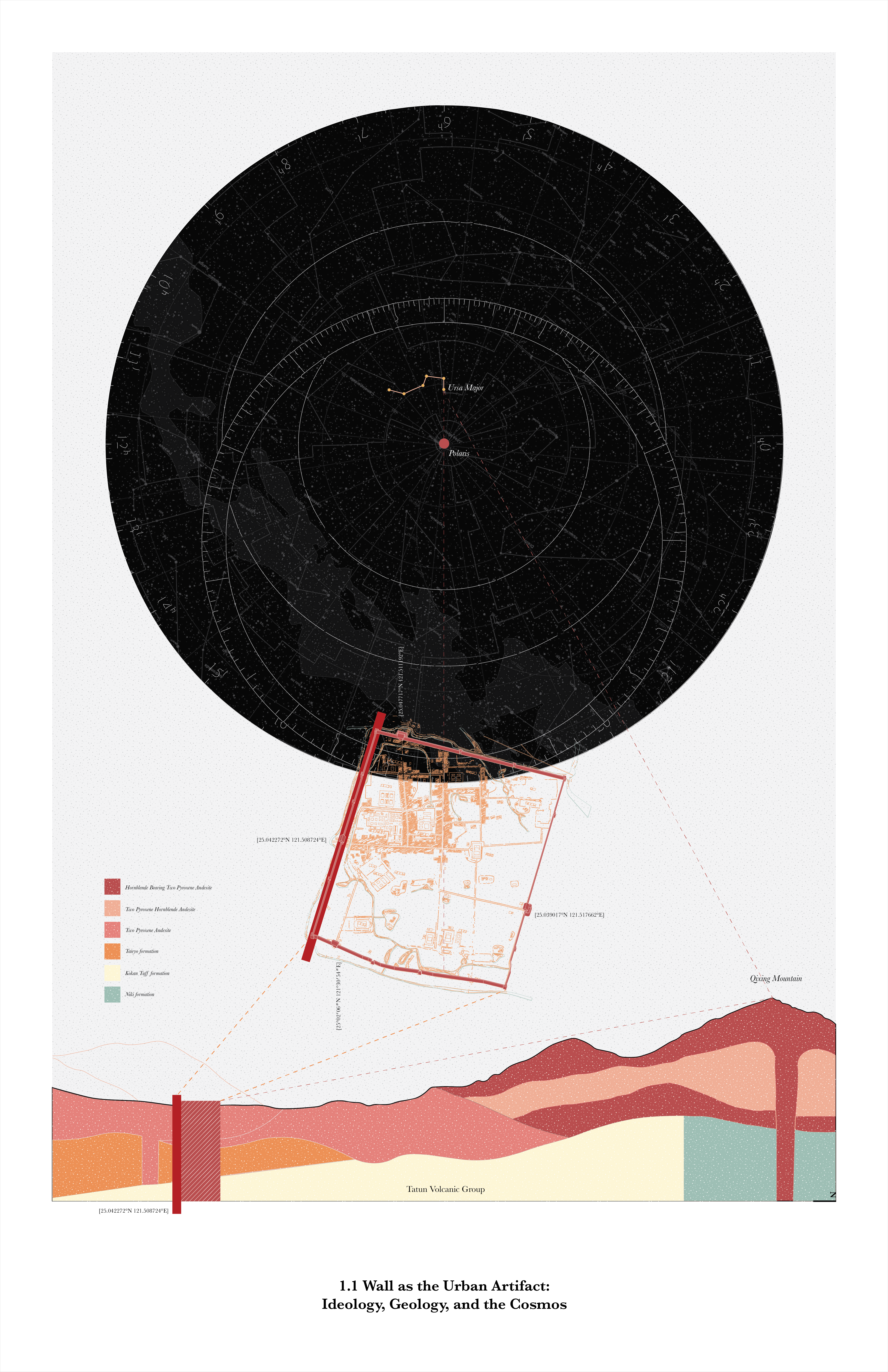



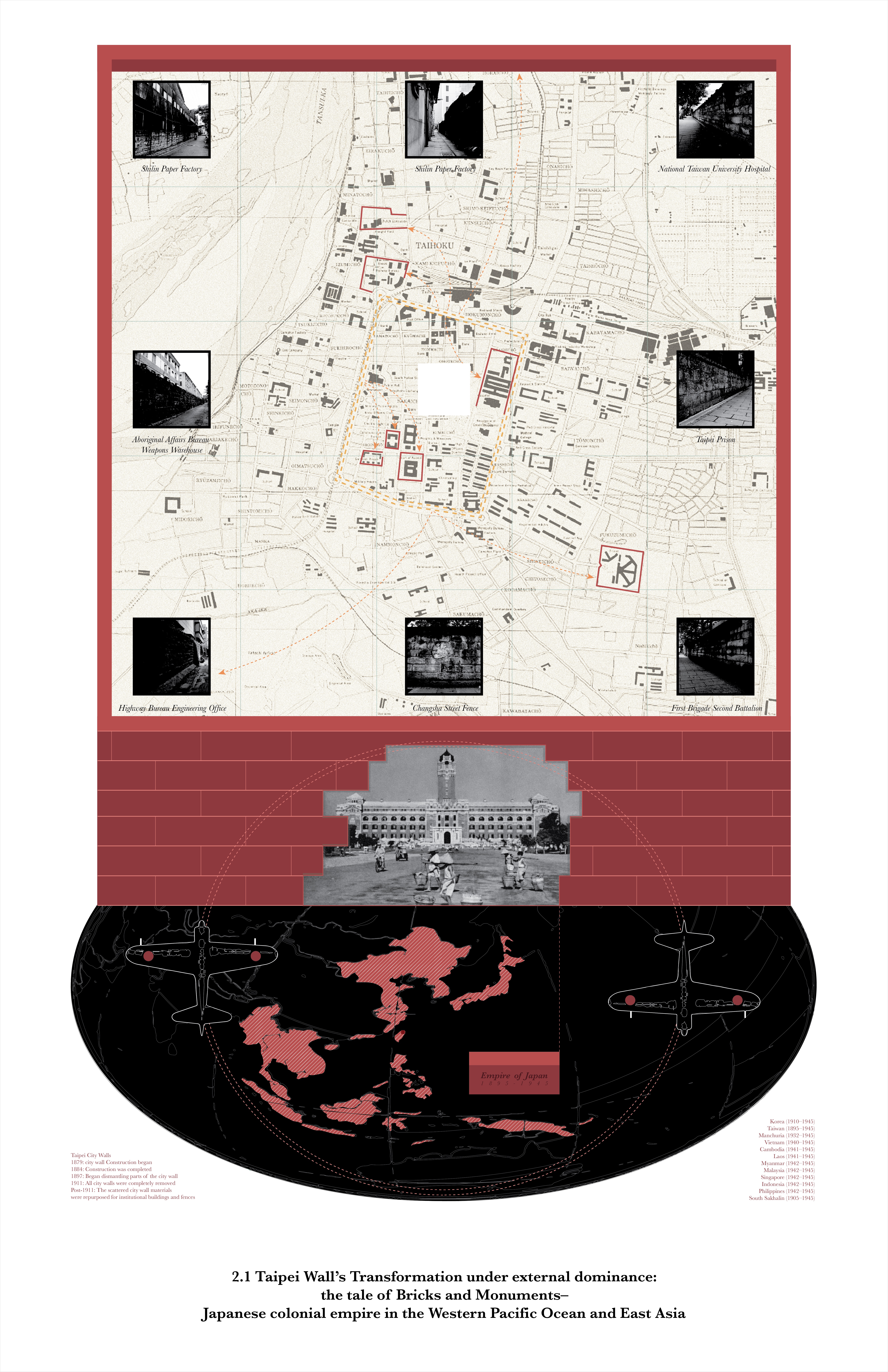



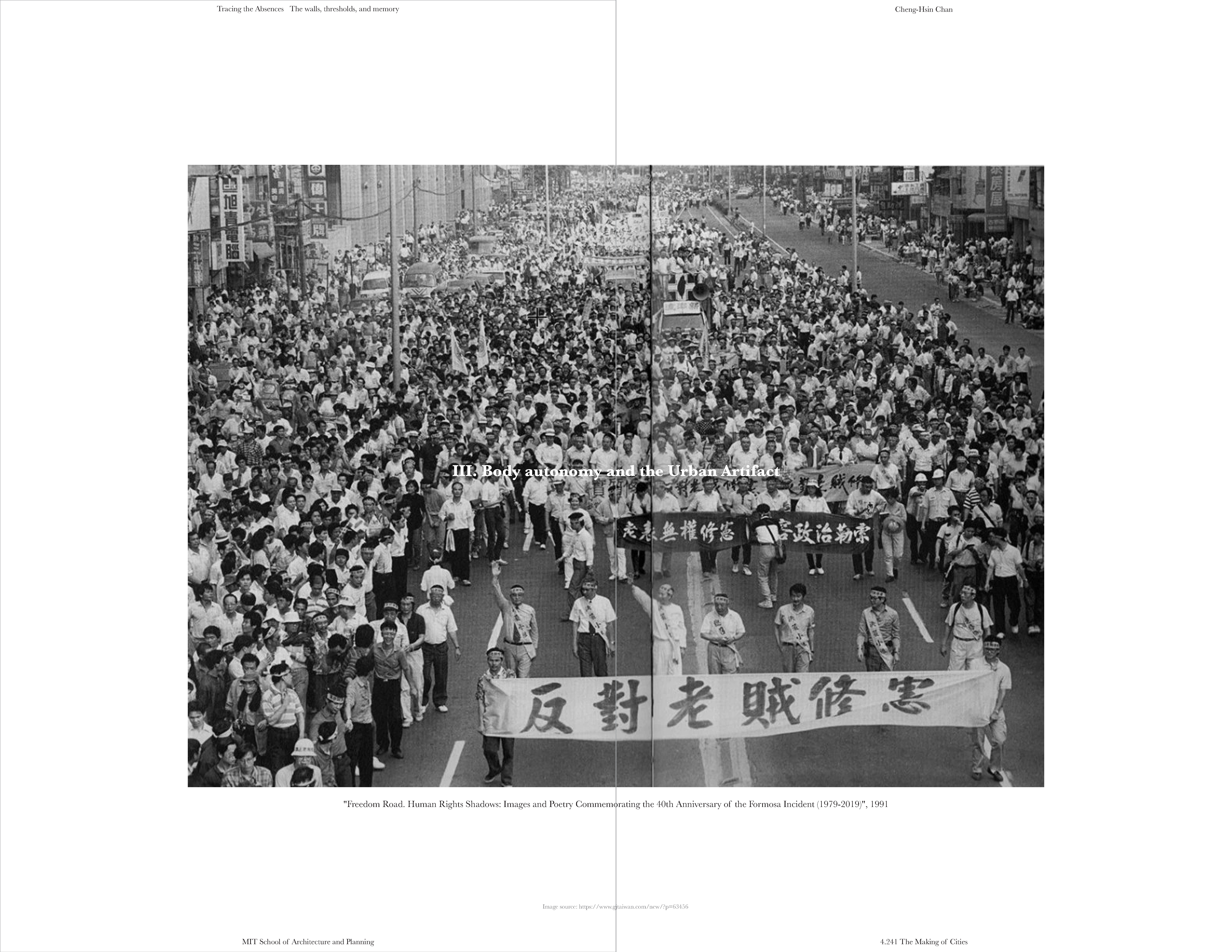
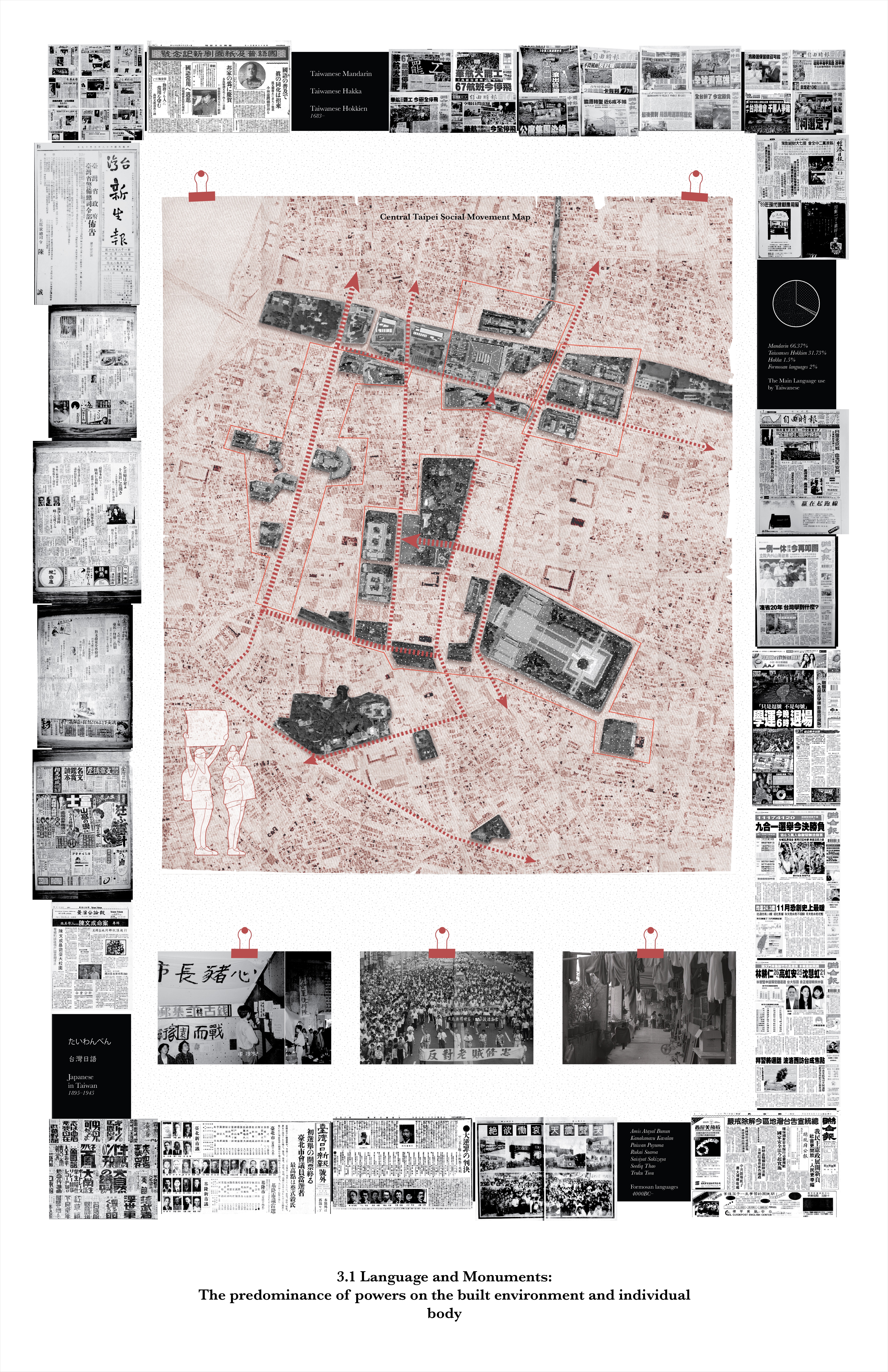


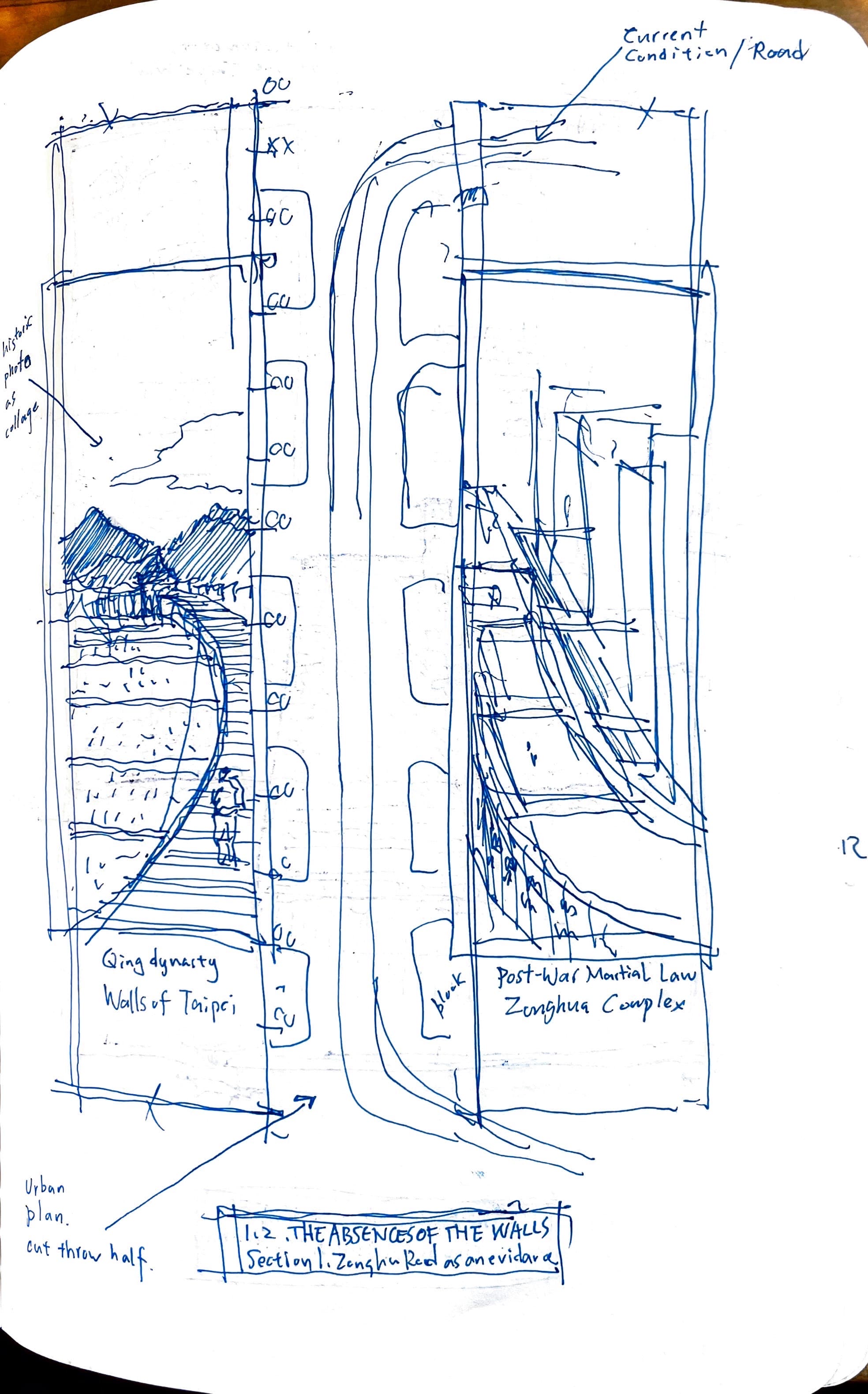



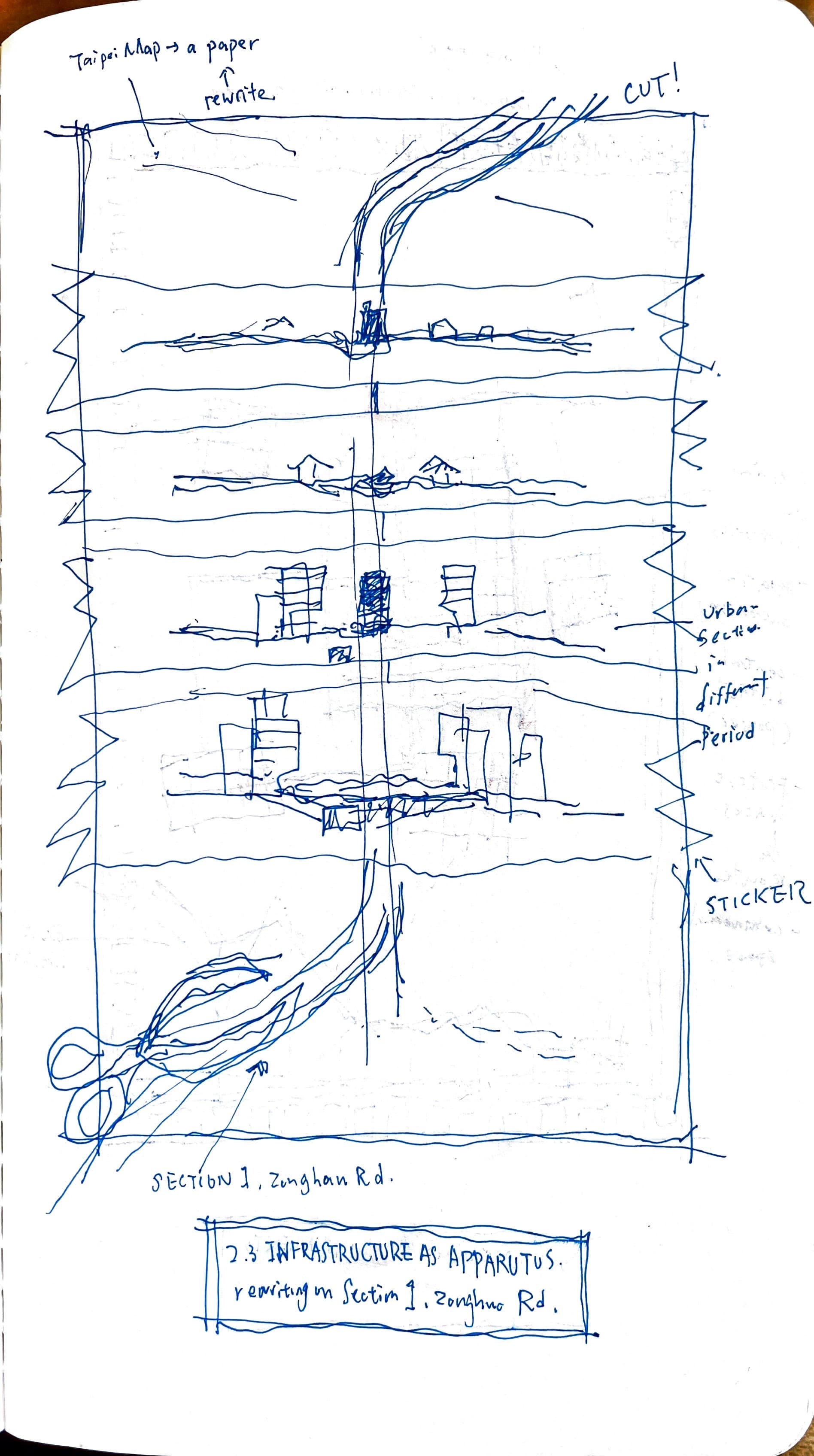


MIT SA+P
4.241
Advisor: Roi Salgueiro Barrio
4.241
Advisor: Roi Salgueiro Barrio
